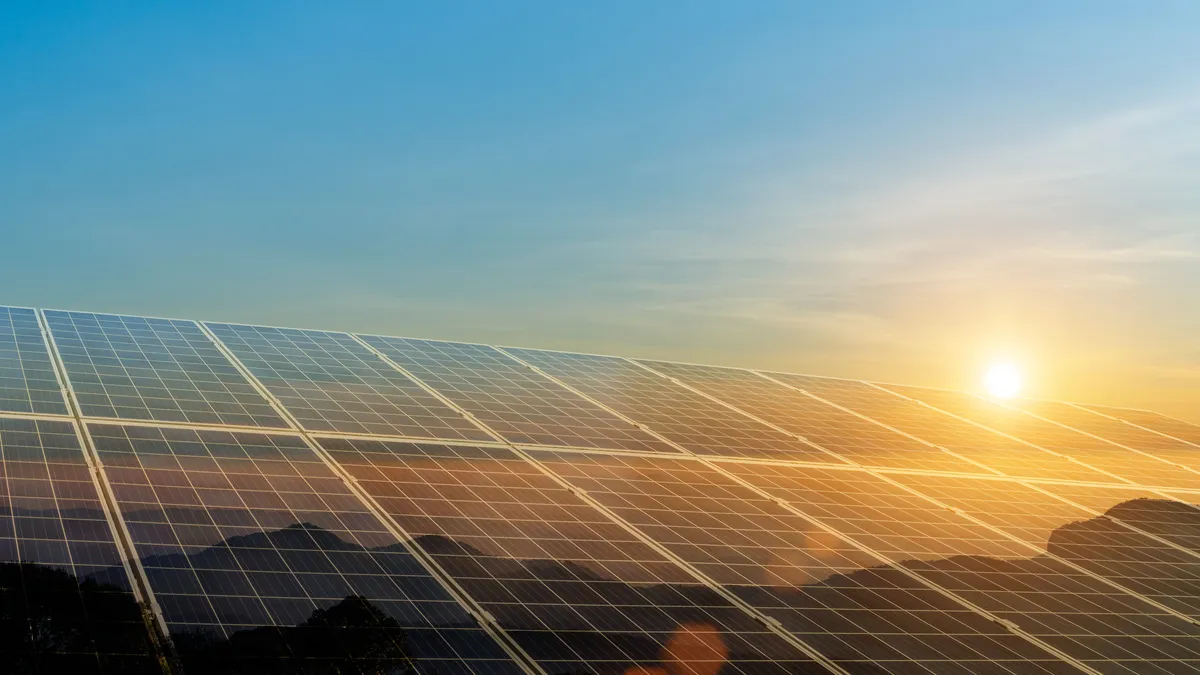Laura Sherman is president of the Michigan Energy Innovation Business Council.
The biggest energy policy event in the Midwest this year came on Nov. 28 when Michigan Gov. Gretchen Whitmer signed a package of bills into law that will quadruple Michigan’s renewable energy standard, move to a 100% clean energy standard by 2040, require aggressive increases in energy efficiency from electric and gas utilities, streamline the permitting of new wind, solar and storage projects, create a target for energy storage deployment, expand access to rooftop solar and help transition workers from fossil fuel industries to new jobs, among other policies.
These actions stand out because, as other observers have commented, Michigan is now the first swing state in the industrialized Midwest to pass this kind of clean energy standard. The state is now a test case for the country on how to take a set of bold clean energy policies and realize its goals to decarbonize the electric grid.
For the advanced energy industry in Michigan, the new energy laws represent major strides forward in a number of crucial areas. In addition to the increased renewable energy, clean energy and energy efficiency standards, the laws make significant progress related to distributed generation, energy storage and renewable energy project siting.
The laws are signed but the next question is: what will their legacy be? Can they achieve their goals of helping Michigan, a state that was mostly reliant on coal-fired power just a few years ago, get to a carbon-free grid?
The new laws raise the limit on customers installing distributed generation from 1% to 10% of utilities’ average yearly peak load. This represents a significant and meaningful increase in the number of customers who can now add rooftop solar to their homes across Michigan. Additionally, a customer’s system size is no longer limited to 150 kW and can now be big enough to cover 110% of the customer’s annual load. These changes will not only allow more customer-sited solar panels, batteries and other forms of distributed generation to be built but also allow installations to be properly sized for a customer who is increasing its electricity use by, say, electrifying building systems or adding an electric vehicle.
As Michigan expands the use of distributed generation, there may also be cost advantages for ratepayers as utilities look to address the state’s record of poor electric reliability. Distributed energy resources may make it possible for utilities to spend less on distribution grid investments by providing more sources of backup power across the grid, mitigating the impacts of outages and in some cases allowing utilities to defer distribution grid improvement projects.
These distributed generation reforms are just the start. There are already bills introduced in the Michigan legislature that would further invigorate the growth of distributed generation in the state by making rooftop solar and behind-the-meter storage more affordable for low- and middle-income customers. These bills would offer rebates to customers who install rooftop solar and behind-the-meter storage, with larger rebates for low-income customers, and would provide customers with a bill credit for benefits their distributed generation systems provide to their communities.
Another major victory in the newly-signed legislation was the creation of a requirement for the deployment of 2,500 MW of energy storage by 2030. Next, utilities will need to show they can meet this mandate in the integrated resource plans they regularly submit to the Michigan Public Service Commission, or MPSC. This energy storage will be a crucial complement to the large amounts of utility-scale wind and solar plants that will be built in response to the new renewable energy and clean energy standards created by the legislation. More storage capacity can increase the value of renewable energy by limiting curtailment, according to the energy storage roadmap that the Michigan Energy Innovation Business Council and Institute for Energy Innovation completed for the Michigan Department of Environment, Great Lakes and Energy.
One of the most significant changes in the new laws is a reform to the siting process for large renewable energy and energy storage projects. The MPSC now has more power to review projects if a local government does not have a compatible ordinance. This reform was badly needed. In recent years, outside money has poured into parts of Michigan to support misleading campaigns to block renewable energy projects at the local level, and in some cases these campaigns were successful, despite the enormous economic advantages in the forms of local tax revenue, community benefits and jobs that projects have brought to communities.
Over the next year, project developers and communities will have the chance to work together with the MPSC to make sure that the process removes roadblocks while also making sure local voices are heard. In many ways, this new process has arrived just in time. Not only has Michigan quadrupled its renewable energy standard, but there are also many financial opportunities right now for renewable energy coming from the federal level as well as the state level, such as $30 million in grants for projects in “Renewable-Ready Communities” through a new program in the state budget to incent the siting of renewable energy projects in communities throughout Michigan.
The accomplishments are impressive, but as we celebrate the passage of these laws, we must also look ahead to next steps. Over the coming years, Michigan’s regulators, state and local governments, utilities and clean energy industry will need to work together to put the processes and procedures in place to ensure the success of these laws. There also remains significant work to do to remove remaining barriers on distributed generation, project siting and more, and these same challenges will need to be confronted around the country if not just Michigan, but any state, is going to effectively decarbonize the electric grid.






















